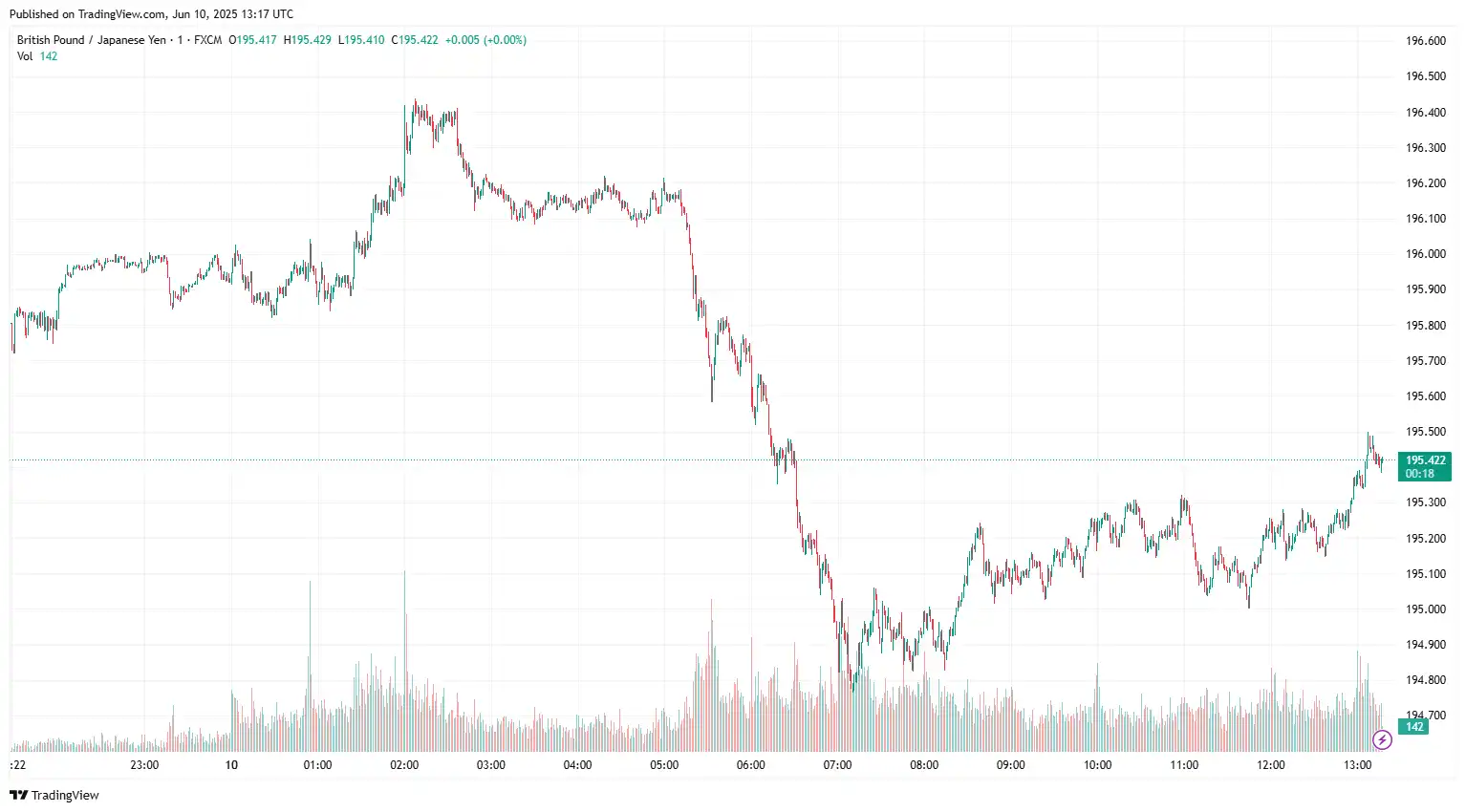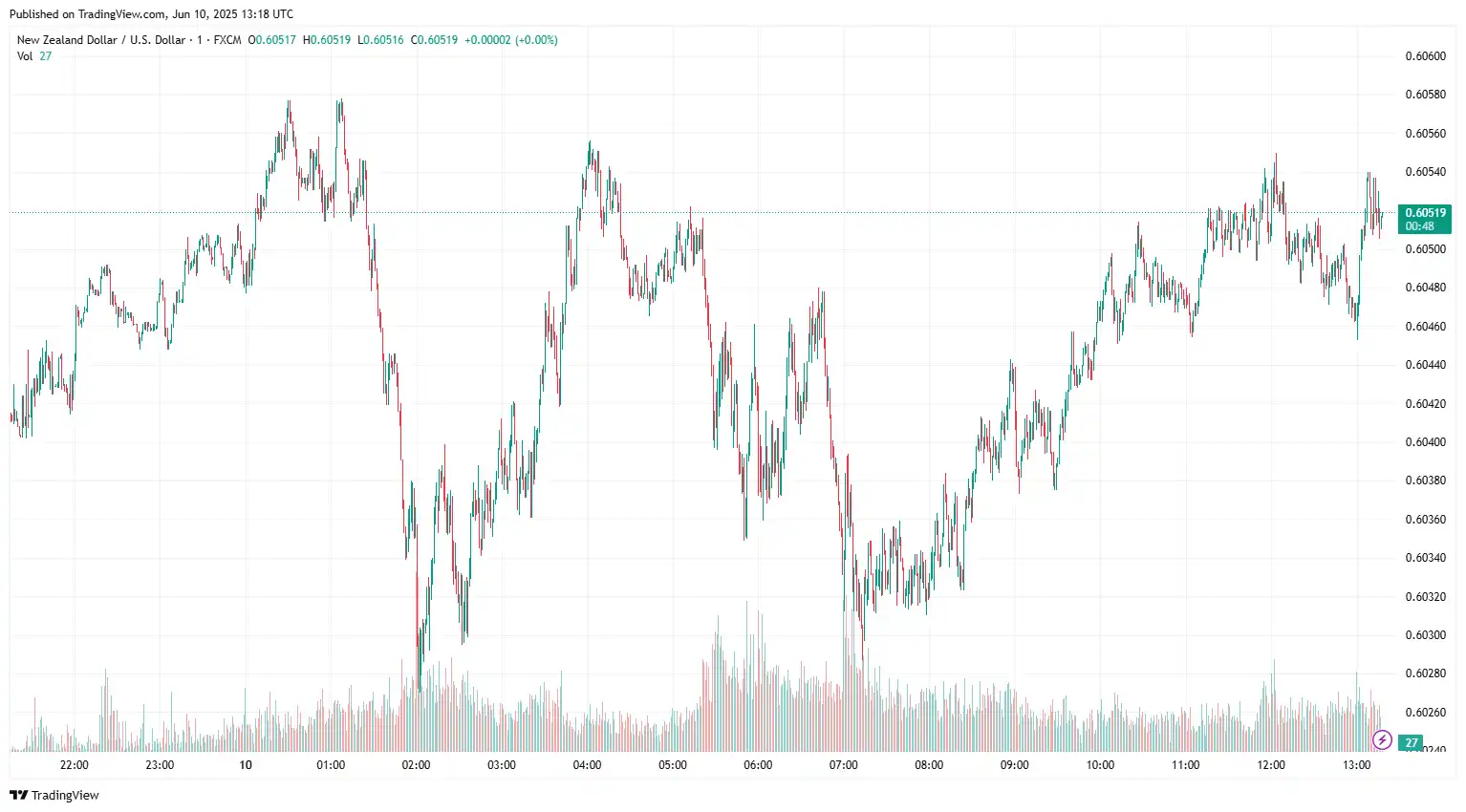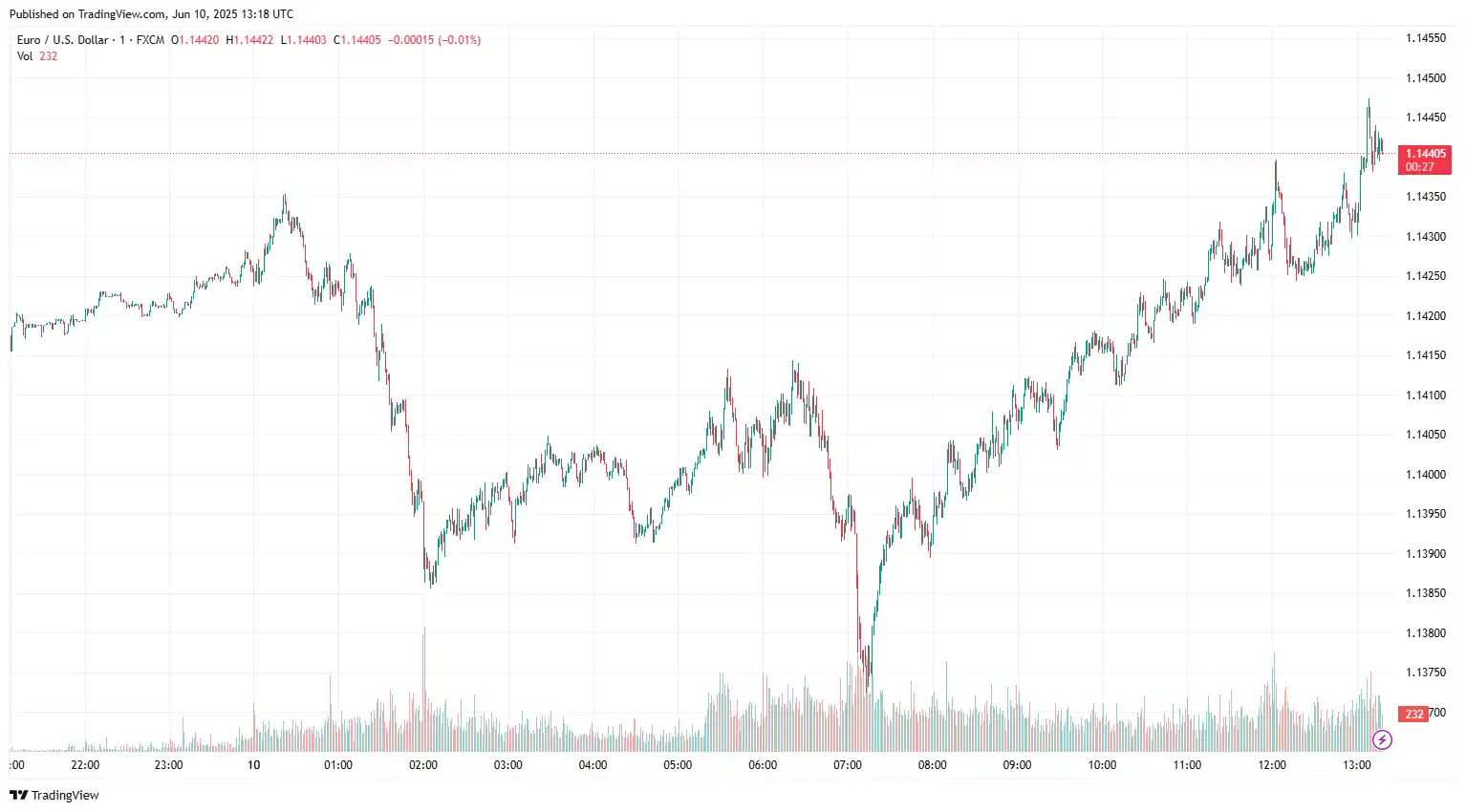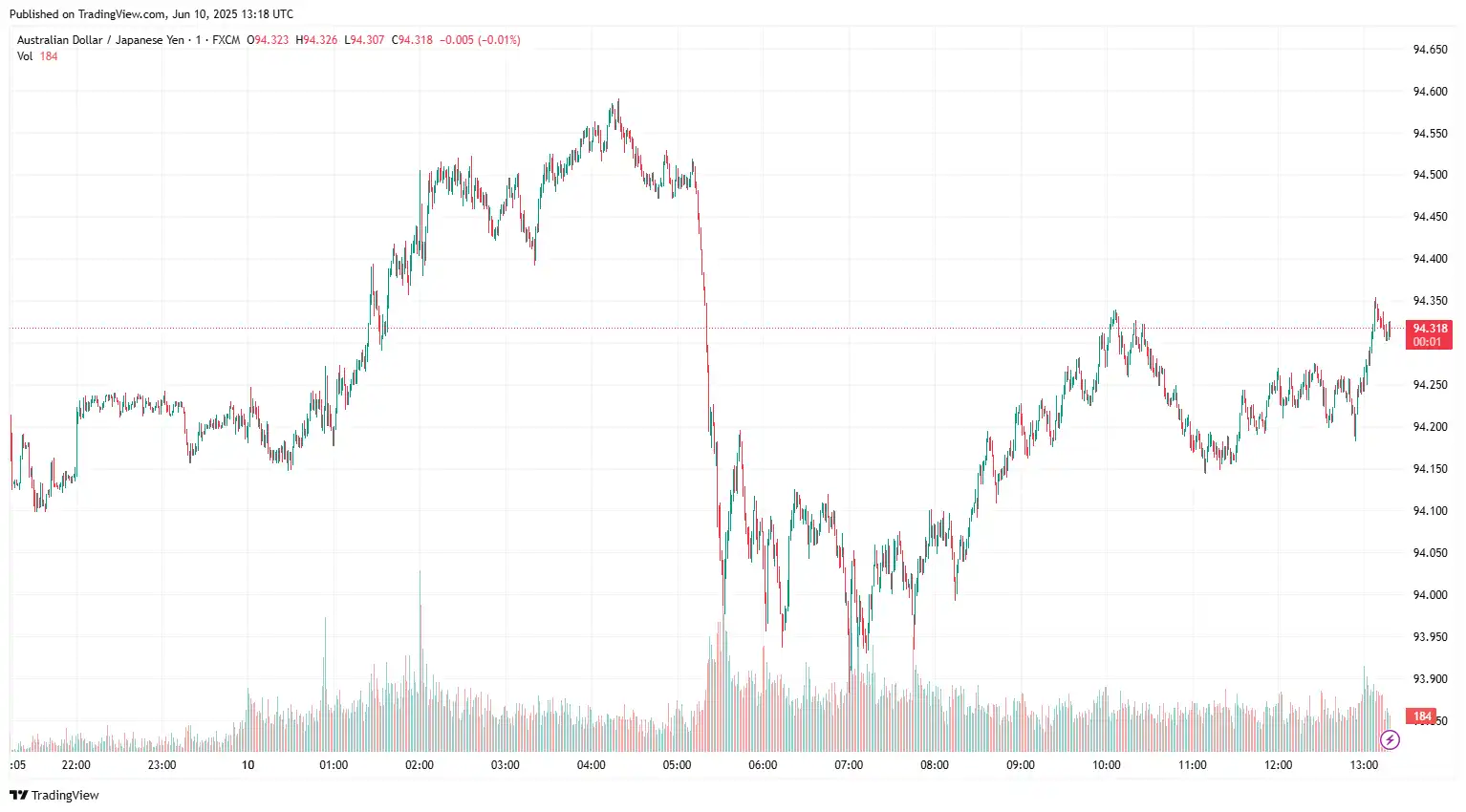GBP/JPY sharply declined to 194.96, as the underwhelming UK employment data indicated an uptick in the unemployment rate and weaker-than-forecast wage growth, weighing on the pound. On Tuesday, the UK Office for National Statistics revealed that the ILO Unemployment Rate edged higher to 4.6% in the three months to April, compared to 4.5% previously, aligning with market expectations of 4.6%. Additional details of the report revealed that the number of individuals claiming unemployment benefits rose by 33.1K in May, compared to a revised decline of 21.2K in April, falling short of the expected figure of 9.5K. The Employment Change data registered at 89K in April, down from 112K in March. Meanwhile, Average Earnings, excluding bonuses, in the UK increased by 5.2% year-on-year (YoY) in April, compared to a previously revised growth of 5.5%. The market forecast anticipated a 5.4% figure. Another measure of wage inflation, Average Earnings, including bonuses, rose by 5.3% during the same period after accelerating by a revised 5.6% in the quarter ending March. This data also fell short of the estimate of 5.5%.
On the policy front, the market confidence that the Bank of England (BoE) will leave the interest rate unchanged in the upcoming policy meeting supports the sterling. Slower wage growth and a decrease in labour demand are likely to lead Bank of England (BoE) officials to reconsider their guidance, suggesting that the central bank will pursue a "gradual and cautious" approach to monetary expansion. This guidance was provided in May, following a 25 basis point (bps) reduction in interest rates to 4.25%.
On Japan's side, the cautious market mood over the US-China trade talks increased demand for traditional safe-haven assets, strengthening the yen. The Japanese economy showed no growth during the first quarter (Q1) of 2025, according to the final reading released by Japan's Cabinet Office on Monday. This figure exceeded market expectations and the prior estimate of -0.2%. Japan's Gross Domestic Product (GDP) declined at an annual rate of 0.2% in Q1, an improvement from the previous reading of -0.7%. On Monday, Japanese Prime Minister Fumio Kishida emphasised that Japan must acknowledge that rising interest rates will increase government debt financing costs and affect budget plans. He noted, "Japan has experienced low interest rates for a very long period. Thus, some segments of the public are unfamiliar with the implications of rising interest rates. When interest rates increase, the costs associated with government debt financing will rise, impacting spending. The government needs to maintain public and market confidence in Japan's financial situation." Bank of Japan (BoJ) Governor Kazuo Ueda remarked on Tuesday that the central bank will raise interest rates if it is confident that underlying inflation approaches or hovers around 2%. Ueda further stated that if the economy and prices face strong downward pressure, the central bank has limited ability to stimulate growth through interest rate cuts, especially with short-term rates remaining at 0.5%.
Broader market sentiment surrounding the British monthly Gross Domestic Product (GDP) and factory data, along with Japanese producer inflation numbers, will influence the GBP/JPY exchange rate.

NZD/USD Sinks as Investors Await US-China Meeting Minutes
NZD/USD fell to 0.6036 as marketers await the outcome of trade talks between the United States (US) and China, making cautious bets around the pair. Moreover, rising market anticipation that the Reserve Bank of New Zealand (RBNZ) will adopt a dovish policy stance continues to exert selling pressure on the New Zealand dollar. Investors are closely monitoring the negotiations between the US and China; however, no comments or official statements have been released following the first day of talks. President Donald Trump remarked that the discussions "should go very well." US officials indicated that this might lead to lifting some tech export restrictions in return for China's commitment to relax limits on rare earth exports, essential for various energy, defence, and technology sectors. The optimistic tone from officials regarding the US-China trade talks after the initial day of discussions supports the China-proxy Kiwi, as China is a significant trading partner for New Zealand. On the data front, the Chinese Consumer Price Index (CPI) fell at an annual rate of 0.1% in May, following a 0.1% decline in April. However, the market consensus anticipated a 0.2% decrease for the reported period. Meanwhile, China's CPI inflation decreased by 0.2% month-on-month, contrasting with a 0.1% increase in April. China's Producer Price Index (PPI) continues to weaken, showing an annual decline of 3.3% in May after a 2.7% reduction in April. China's Trade Balance (CNY) reached CNY 743.56 billion in May, up from the previous surplus of CNY 689.99 billion. Meanwhile, exports rose by 6.3% year-on-year, compared to 9.3% in April. The country's imports fell by 2.1% year-on-year during the same period, following a previous rise of 0.8%.
On the greenback front, prevailing uncertainties regarding the upcoming trade discussions between the United States and China are fostering a cautious market sentiment. The US Bureau of Labour Statistics (BLS) indicated that non-farm payrolls (NFP) in May rose by 139,000, following a revised increase of 147,000 in April (down from an earlier estimate of 177,000), exceeding the market expectation of 130,000. The report also states that the unemployment rate held steady at 4.2%, as expected, while the labour force participation rate slightly decreased to 62.4% from 62.6%. Additionally, annual wage inflation, shown through changes in average hourly earnings, remained stable at 3.9%, surpassing the market forecast of 3.7%. Meanwhile, investors are looking ahead to the US Consumer Price Index (CPI) data for May, expected to be released on Wednesday. The CPI report is predicted to reveal that headline inflation increased more rapidly, reaching 2.5% year-on-year, compared to a 2.3% rise in April. During the same period, the core CPI, which excludes the volatile food and energy sectors, is expected to rise to 2.9% from the previous reading of 2.8%. These inflation statistics are likely to shape market expectations regarding the Federal Reserve's (Fed) monetary policy outlook.
In the absence of major economic data from New Zealand, as well as US-China talks and Wednesday's US Consumer Price Index report, the NZD/USD exchange rate will be influenced.

EUR/USD Hovers as ECB Turns Hawkish
EUR/USD struggled near 1.1404; as highly anticipated, the rate cut by the European Central Bank (ECB), combined with the upbeat Sentix Confidence Index, lent support to the euro. The Eurozone Sentix Investor Confidence Index, an indicator of investors' opinions about the Eurozone's near-term economic outlook, jumped sharply to 0.2 in June following May's -8.1, the latest survey showed on Tuesday. Peter Kazimir, a policymaker at the European Central Bank (ECB), stated on Monday, "I think we're nearly done with, if not already at the end of the easing cycle." He further remarked, "I see clear downside risks to growth, but neglecting upside inflation risks would be a mistake. We should keep all options open; data over the summer will show if further adjustments are needed." Recently, ECB Governing Council member Joachim Nagel expressed that the central bank can take its time regarding interest rates, noting that monetary policy is now at a neutral level and no longer restrictive. ECB board member Isabel Schnabel indicated over the weekend that the central bank can be patient with interest rates, stressing that inflation is now almost in line with the ECB's target. She stated, "We are no longer restrictive. I believe that we can take the time to assess the situation first. We now have maximum flexibility at this interest rate level. The European Central Bank can take its time with interest rates, as monetary policy is now set at a neutral, non-restrictive level." On Tuesday, ECB policymaker Francois Villeroy de Galhau commented that "we will remain pragmatic going forward on rates," adding, "We will adjust based on the data flow. We will be as flexible as needed. While policy and inflation are currently in a favourable position, it doesn't imply that the ECB will remain unchanged."
On the global trade front, China's Vice President Han Zheng stated on Tuesday that the Chinese government is prepared to collaborate with the European Union to further expand areas of cooperation and foster new developments in China-EU relations. He also noted that China will undertake bilateral and multilateral cooperation projects to assist small island states and other developing countries in achieving Sustainable Development Goals. He highlighted that his attendance at the United Nations Ocean Conference demonstrates his support for the United Nations and the French side. China is ready to work with the EU to further enhance cooperation and promote new developments in China-EU relations.
On the greenback front, the stronger-than-expected US Non-Farm Payrolls (NFP) report, coupled with optimism over the resumption of US-China trade talks, injects volatility into the US dollar market. The New York Fed SCE reported that inflation expectations for one year decreased from 3.6% to 3.2%, while those for a three-year horizon fell from 3.2% to 3%. Lastly, for a five-year period, it stood at 2.6%, down from 2.7% in the previous survey. The market expects the headline CPI to rise to 2.5% from 2.3%, while core inflation is predicted to accelerate to 2.9% from 2.8%.
With little in the way of high-impact Eurozone releases today, investors will closely monitor Wednesday's US Consumer Price Index (CPI) and US-China trade talks for fresh impetus on the EUR/GBP exchange rate.

AUD/JPY Rebounds Amid Uncertain BoJ Monetary Policy Outlook
AUD/JPY recovered near 94.20 amid a prevailing cautious market mood regarding the Bank of Japan (BoJ) monetary policy stance, which dampened the yen. However, the Japanese yen gained ground following the upward revision of Japan's Q1 GDP print, despite indications of rising inflationary pressures in Japan, reaffirming market anticipation that the Bank of Japan (BoJ) will continue to increase interest rates. Japan's Gross Domestic Product (GDP) contracted at an annual rate of 0.2% in Q1, compared to the initial estimate of a 0.7% decline. Meanwhile, the Japanese economy recorded no growth during the first quarter (Q1) of 2025, exceeding market expectations and the previous estimate of -0.2%. On Monday, Japan's Prime Minister Shigeru Ishiba cautioned that increasing interest rates by the BoJ might restrict the government's borrowing capacity by raising the cost of funds, which could impede Tokyo's spending plans. PM Ishiba made this remark amid concerns in Tokyo about the economic outlook stemming from US President Donald Trump's tariff policies. Meanwhile, BoJ Governor Kazuo Ueda has indicated the possibility of further tightening of monetary policy. Earlier that day, Ueda informed Parliament that "we will raise interest rates if we have enough confidence that underlying inflation nears 2% or moves around 2%." Reports suggest that the BoJ has pointed out that underlying inflation—a specific measure of price pressures related to demand—has continued to fall short of its annual target despite general consumer inflation staying well above 2% for at least the past three years.
On the other hand, the Australian Dollar (AUD) outperforms against its peers amid optimism surrounding trade discussions between the US and China in London. Australia's Westpac Consumer Confidence rose 0.5% month-over-month in June, sharply falling from the 2.2% gain in May, reacting to the ongoing uncertainty over global trade. The business confidence index rose to 2 in May from -1 in April. Meanwhile, the business conditions indicator dropped to zero from 2 in the previous month. On the domestic front, market sentiment surrounding the Reserve Bank of Australia's (RBA) monetary policy outlook will influence the Aussie. Australia's Trade Balance recorded a surplus of $5,413M in April, falling short of expectations of $6,100M and down from the revised $6,892M in March. Exports decreased by 2.4% MoM, following a revised rise of 7.2%, while imports increased by 1.1% after a 2.4% decline in March. The Australian Bureau of Statistics (ABS) reported GDP growth of 0.2% QoQ in Q1, which is below the forecast of 0.4% and down from 0.6% in Q4. Annual growth remained steady at 1.3%, missing the expected 1.5%.
On the global front, China's Consumer Price Index (CPI) dropped by 0.1% annually in May, following April's 0.1% decline, while market expectations had forecast a 0.2% decrease. The monthly CPI inflation fell 0.2%, contrasting with an increase of 0.1% in April. The Producer Price Index (PPI) weakened further, with a 3.3% annual decline in May after a 2.7% drop in April. China's Trade Balance (CNY) reached CNY 743.56 billion in May, up from CNY 689.99 billion previously. Exports increased by 6.3% year-on-year, down from 9.3% in April, while imports decreased by 2.1% year-on-year, reversing a previous rise of 0.8%. Any progress in the US-China trade discussions could enhance global risk sentiment, while strong Chinese data may boost demand for Australian exports to China, indirectly benefiting the AUD.
Broader market sentiment around the US-China trade discussions and Australian inflation numbers will drive the AUD/JPY exchange rate.

Stay Ahead in the Currency Game
Whether you're a daily FX trader or handle international transactions regularly, our 'Currency Pulse' newsletter delivers the news you need to make more informed decisions. Receive concise updates and in-depth insights directly in your LinkedIn feed.
Subscribe to 'Currency Pulse' now and never miss a beat in the currency markets!
Ready to act on today’s insights? Get a free quote or give us a call on: +44 (0)20 7740 0000 to connect with a dedicated portfolio manager for tailored support.
Important Disclaimer: This blog is for informational purposes only and should not be considered financial advice. Currency Solutions does not take into account the investment objectives, financial situation, or specific needs of any individual readers. We do not endorse or recommend any specific financial strategies, products, or services mentioned in this content. All information is provided “as is” without any representations or warranties, express or implied, regarding its accuracy, completeness, or timeliness.




